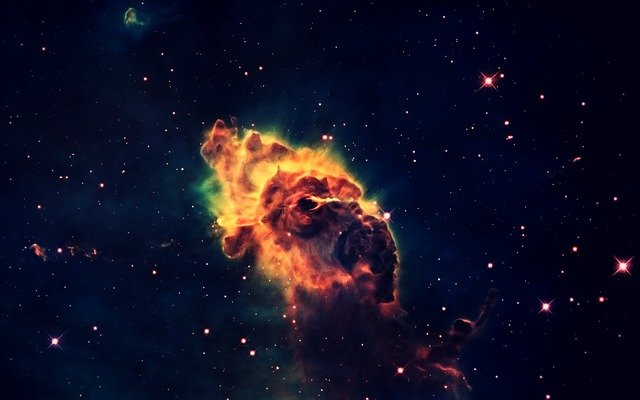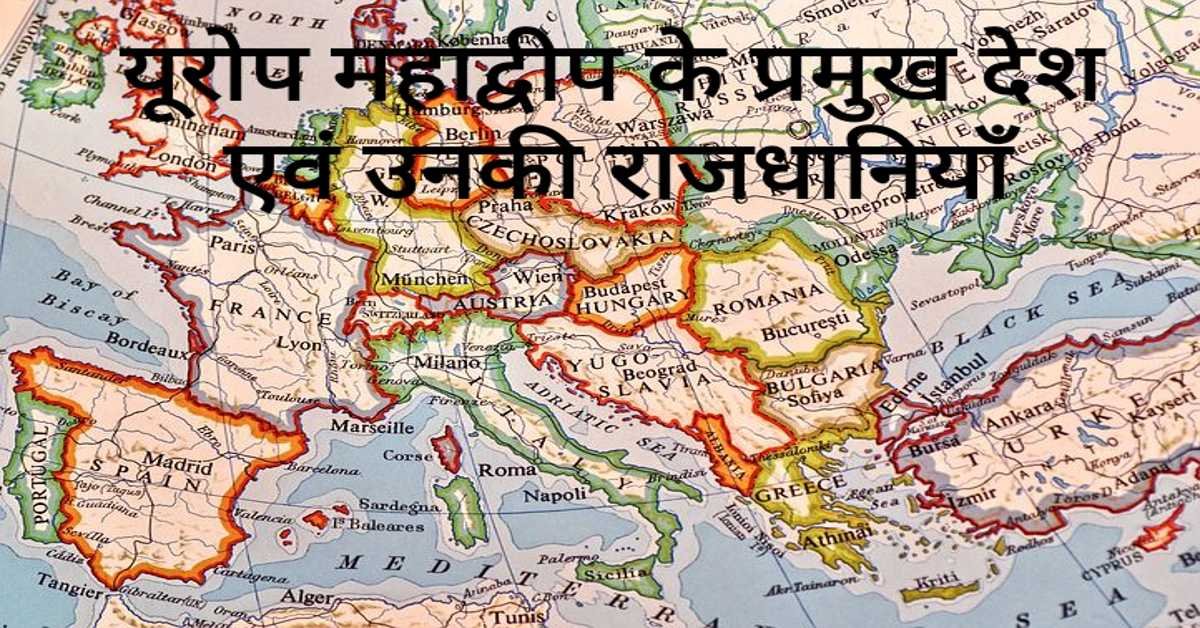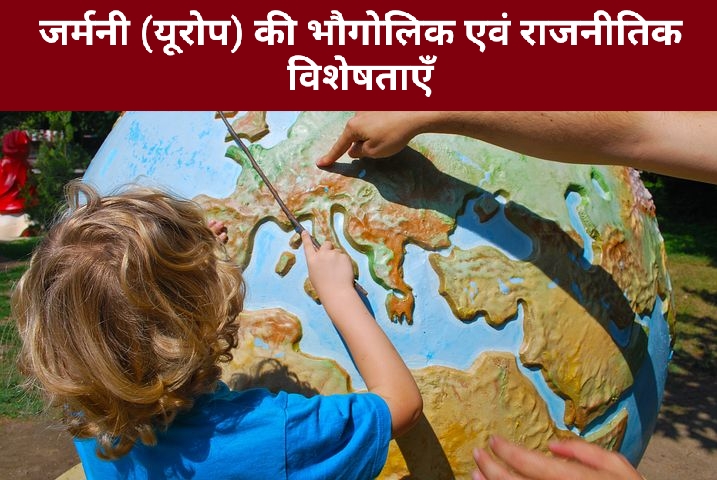
सौरमंडल के पिण्ड || Bodies of the solar system || उपग्रह Satellite || धूमकेतु या पुच्छल तारे || Comet or tail stars || क्षूद्र ग्रह Planetary planet || उल्का पिंड Meteorite
(These are such aerial objects, which revolve around their planet as well as the Sun. Satellites created by nature are called 'natural satellites'. They do not have their own brightness or light. These too are illuminated like the planets only by the light of the sun or stars. The planet with the most satellites in our solar system is Jupiter. Mercury and Venus are planets that do not have any satellite. Our Earth also has a natural satellite 'Moon'.)
चंद्रमा (Moon) - यह हमारी पृथ्वी का एकमात्र प्राकृतिक उपग्रह है। इसकी उत्पत्ति पृथ्वी के ही टुकड़ों से हुई है। चंद्रमा पर वायुमंडल उपस्थित नहीं है। चंद्रमा का परिक्रमण पथ परवलयाकार है। इस कारण पृथ्वी एवं चंद्रमा के बीच की दूरी घटती - बढ़ती रहती है। ऐसी स्थिति जिसमें पृथ्वी एवं चंद्रमा के बीच की दूरी न्यूनतम हो, 'पेरीजी' स्थिति कही जाती है। इस स्थिति में चंद्रमा अपेक्षाकृत अधिक बड़ा एवं चमकीला प्रतीत होता है। ऐसी स्थिति जिसमें पृथ्वी और चंद्रमा के बीच की दूरी अधिकतम हो, 'अपोजी' स्थिति कही जाती है। चंद्रमा की परिभ्रमण और परिक्रमण अवधि लगभग 27 दिन 8 घंटे है। चंद्रमा का गुरुत्व क्षेत्र पृथ्वी के गुरुत्व क्षेत्र का केवल 1/6 भाग है। लगातार चार पूर्ण चंद्र ग्रहण के संयोजन को 'ब्लडमून' या 'टेट्राड' कहा जाता है। इस अवस्था में चंद्रमा पूर्ण रूप से लाल दिखाई देता है।
(It is the only natural satellite of our Earth. It originated from pieces of the earth itself. The atmosphere is not present on the moon. The Moon's rotation path is parabolic. Due to this, the distance between the Earth and the Moon keeps on decreasing. In a situation in which the distance between the Earth and the Moon is minimum, it is called the 'Perigee' position. In this case the moon appears to be much larger and brighter. A situation in which the distance between the Earth and the Moon is maximum is called an 'Apoji' position. The moon's rotation and rotation period is approximately 27 days 8 hours. The Moon's gravitational field is only 1/6 of the Earth's gravitational field. The combination of four consecutive full lunar eclipses is called 'Bloodmoon' or 'Tetrad'. In this state, the moon appears completely red.)
धूमकेतु या पुच्छल तारे (Comet or tail stars) - यह आकाशीय पिण्ड धूल, बर्फ और गैस के द्वारा बने होते हैं। ये सूर्य की परवलयाकार पथ पर अनियमित परिक्रमा करते हैं। सूर्य की परिक्रमा करते हुए जब ये उसके निकट पहुँच जाते हैं, तो गर्म होने के पश्चात उनसे गैसों के फुहारे निकलने लगते हैं। इस प्रक्रिया से पूछ जैसी संरचना बन जाती हैं। इसे ही 'पुच्छल तारा' कहा जाता है। पुच्छल तारे की पूँछ सदैव सूर्य के विपरीत दिशा में होती है। 'हेली' एक धूमकेतु है। यह पृथ्वी से प्रत्येक 76 वर्ष बाद दिखाई देता है। यह पृथ्वी के पास से गुजरने वाले किसी भी पुच्छल तारे के लिए सबसे कम अवधि है। भविष्य में यह 2062 ईस्वी में देखा जाएगा।
(These celestial bodies are formed by dust, ice and gas. They revolve irregularly on the Sun's parabolic path. When they reach near the Sun, orbiting the Sun, after heating, gases of gases start coming out of them. In this process, a structure becomes like a question. This is called the 'tail of the star'. The tail of the tail is always in the opposite direction of the sun. 'Haley' is a comet. It appears every 76 years from Earth. This is the shortest period for any tailed star passing through the Earth. In future it will be seen in 2062 AD.)
पुच्छल तारे के तीन भाग होते हैं
(The tail star has three parts) -
नाभि (Navel)- यह पुच्छल तारे का मुख्य स्थाई भाग होता है। यह धूल, बर्फ एवं अन्य ठोस पदार्थों से निर्मित होता है।
(This tail is the main permanent part of the star. It is made up of dust, ice and other solids.)
कोमा (Coma) - यह पुच्छल तारे का शीर्ष भाग होता है। इससे जल, कार्बन डाइऑक्साइड तथा अन्य गैसों का घना बादल केंद्र से उत्सर्जित होता रहता है।
(This is the apex of the tail. Due to this, a dense cloud of water, carbon dioxide and other gases is emitted from the center.)
पूछ (Tail) - यह पुच्छल तारे का पीछे का हिस्सा होता है। यह फुहारे के रूप में गैसों के अवशेष होते हैं।
(This tail is the back part of the star. It contains residues of gases in the form of spray.)
क्षूद्र ग्रह (Planetary planet) - ये अलग-अलग आकार के पिंडों की पट्टी के रूप में हमारे सौरमंडल में मंगल तथा बृहस्पति ग्रह के बीच करोड़ों किलोमीटर के क्षेत्र में अवस्थित हैं। ये ग्रह सूर्य के चारों तरफ अन्य ग्रहों के समान ही दीर्घ वृत्ताकार कक्षा में परिक्रमा करते हैं। ये पश्चिम से पूर्व की ओर अर्थात घड़ी की सुई के विपरीत दिशा में परिक्रमा करते हैं। उल्लेखनीय है कि सन् 2006 ईस्वी में अंतर्राष्ट्रीय खगोलीय संघ द्वारा 'प्लूटो' को ग्रह की श्रेणी से बाहर निकाल दिया गया था तथा उसे क्षूद्र ग्रह की श्रेणी में रखा गया था। प्लूटो एवं उसके जैसे अन्य क्षूद्र ग्रहों के लिए एक नई श्रेणी 'प्लूटाँइड' बना दी गई थी। इन ग्रहों में से एक 'सेरेस' है। यह सबसे बड़ा एवं सर्वाधिक चमकीला क्षूद्र ग्रह है। इसके अतिरिक्त 4 वेस्टा, 52 यूरोपा, 243 इडा, 511 डेविडा, 1862 अपोलो अन्य क्षूद्र ग्रह हैं।
(These are in the form of strips of different sized bodies located in an area of millions of kilometers between Mars and Jupiter in our solar system. These planets revolve around the Sun in the same long circular orbit as the other planets. They rotate from west to east, ie in a counter-clockwise direction. It is noteworthy that in 2006 AD, 'Pluto' was thrown out of the planet's category by the International Astronomical Union and it was placed in the category of a planet. A new category 'Plutoid' was created for Pluto and other similar planets. One of these planets is 'Ceres'. It is the largest and brightest planetary planet. Apart from this, 4 Vesta, 52 Europa, 243 Ida, 511 Davida, 1862 Apollo are other extinct planets.)
उल्का पिंड (Meteorite) - मंगल तथा बृहस्पति के बीच सुदूर ग्रहों के साथ अरबों की संख्या में उल्का पाए जाते हैं। परंतु वरुण ग्रह के बाद के 'क्यूपर बेल्ट' उल्काओं का सबसे बड़ा स्रोत है। जब छुद्र ग्रह या ग्रहिका अपने मार्ग से विचलित होकर पृथ्वी के वायुमंडल में प्रवेश करते हैं, तो धूल के कणों के साथ घर्षण होने के कारण उनमें आग उत्पन्न हो जाती है एवं चमकीले प्रतीत होने लगते हैं। इन्हें ही 'उल्कापिंड' या 'टूटता हुआ तारा' कहा जाता है। इनमें से कुछ पृथ्वी पर पहुंचने से पूर्व ही जलकर राख हो जाते हैं, ये 'उल्काश्म' कहे जाते हैं। कुछ उल्काएँ जो चट्टानों के रूप में पृथ्वी में जाकर गिरती हैं, उन्हें 'उल्कापिंड' कहा जाता है।
(A number of billions of meteors are found between Mars and Jupiter along with distant planets. But the 'Kuiper Belt' is the largest source of meteors after the planet Varuna. When the planets or planets deviate from their path and enter the Earth's atmosphere, due to friction with dust particles, fire arises in them and starts to appear bright. These are called 'meteorites' or 'falling stars'. Some of these burns to ashes before reaching the earth, these are called 'meteorites'. Some meteors that fall into the earth in the form of rocks are called 'meteorites'.)
सौर मंडल के संबंध में अन्य महत्वपूर्ण तथ्य (Other important facts about the solar system) -
1. दो आकाशगंगा के बीच का स्थान काला होता है।
(The space between the two galaxies is black.)
2. हमारी पृथ्वी से सूर्य के पश्चात सबसे पास का तारा 'प्रॉक्सिमा सेंटोरी' है। इसकी दूरी पृथ्वी से लगभग 4 प्रकाश वर्ष है।
(The nearest star after the Sun from our Earth is 'Proxima Centauri'. Its distance is about 4 light years from Earth.)
3. हिग्स (Higgs) - बोसाँन कण को 'गॉड पार्टिकल' कहते हैं। (The boson particle is called 'God particle'.)
4. तेज गति से चलने वाले ऐसे सूक्ष्म कण, जो बाह्य अंतरिक्ष से निरंतर पृथ्वी के वायुमंडल में प्रवेश करते हैं, ब्रह्मांडीय किरणें कहीं जाती हैं। सबसे पहले इन किरणों का अध्ययन 'मिलीकन' नामक वैज्ञानिक ने किया था।
(Such fast-moving microscopic particles, which continuously enter the Earth's atmosphere from outer space, cosmic rays go somewhere. First of all these rays were studied by a scientist named 'Millikan'.)
5. यदि कोई खगोलीय पिंड प्रकाश के वेग से गतिमान हो जाए तो उसका द्रव्यमान अनंत होता है।
( If an astronomical body moves with the velocity of light, its mass is infinite.)
6. 'कैपलर' को 'नवीन खगोलशास्त्र' का जनक कहते हैं।
(Capler is called the father of 'New Astronomy'.)
7. 'कॉपरनिकस' को 'आधुनिक खगोलशास्त्र' का जनक कहते हैं।
(Copernicus is called the father of 'modern astronomy'.)
8. प्रोटोस्टार या आदि तारे को 'भ्रूण तारा' भी कहते हैं।
(Protostar or Adi star is also called 'fetal star'.)
9. पृथ्वी के चुंबकीय क्षेत्र का अक्ष अलग-अलग क्षेत्रों में अलग-अलग होता है। उत्तरी गोलार्ध में पृथ्वी का चुंबकीय ध्रुव 'कनाडा' के उत्तर में 'क्वीन एलिजाबेथ द्वीप' स्थित है।
(The axis of the Earth's magnetic field varies in different regions. In the Northern Hemisphere, the Earth's magnetic pole is located 'Queen Elizabeth Island', north of 'Canada'.)
10. 'क्वासर्स' एक चमकीला खगोलीय पिंड है। यह प्रकाश उत्सर्जित करता है। वास्तव में यह एक ऐसी आकाशगंगा का मध्य भाग है जिसके बारे में कई दिनों तक हमें जानकारी प्राप्त नहीं थी।
(The quasars are a bright celestial body. It emits light. In fact, it is the central part of a galaxy about which we did not know for several days.)
11. सन् 1916 ईस्वी में अल्बर्ट आइंस्टीन ने 'सापेक्षता का सिद्धांत' दिया था। इसके माध्यम से पहली 'बार ब्लैक' होल की भविष्यवाणी की गई थी। ब्लैक होल को 'कृष्ण विवर' भी कहा जाता है।
(Albert Einstein gave the 'Theory of Relativity' in 1916 AD. It was through this that the first 'black' hole was predicted. The black hole is also known as 'Krishna Vivara'.)
12. सन् 1967 ईस्वी में भौतिक वैज्ञानिक 'जॉन व्हीलर' ने एक सार्वजनिक व्याख्यान में सबसे पहले 'ब्लैक होल' शब्द का प्रयोग किया था।
(In 1967, the physical scientist 'John Wheeler' first used the term 'black hole' in a public lecture.)
13. सन् 1974 ईस्वी में 'स्टीफन हॉकिंग' ने अपनी सबसे प्रसिद्ध खोज 'काले विवर विकिरण उत्सर्जित करते हैं' का प्रतिपादन किया था।
(In 1974, 'Stephen Hawking' gave his most famous discovery, 'Black fever emits radiation'.)
RF competition
INFOSRF.COM
संबंधित जानकारी नीचे देखें।
(Watch related information below) 👇🏻

आशा है, उपरोक्त जानकारी उपयोगी एवं महत्वपूर्ण होगी।
(I hope the above information will be useful and important. )
Thank you.
लेखक
(Writer)
infosrf.com



.jpg)




